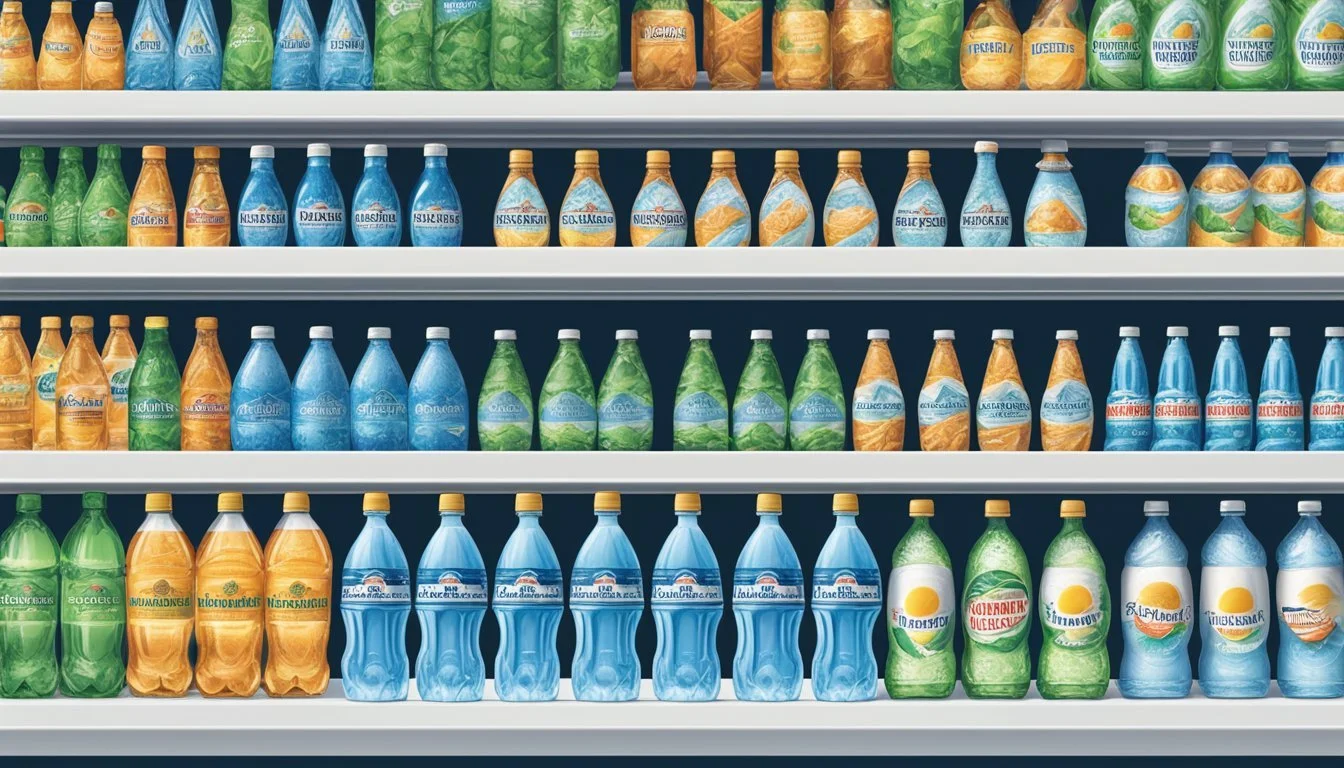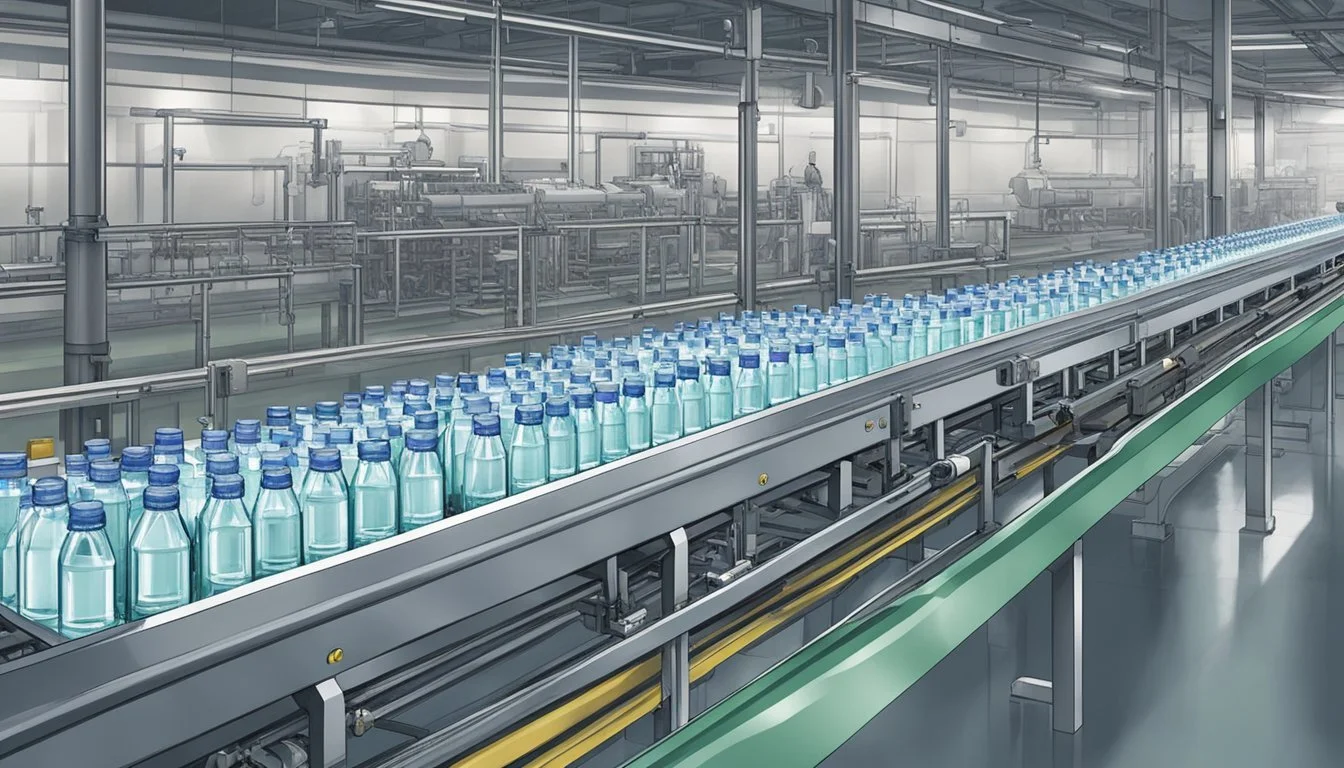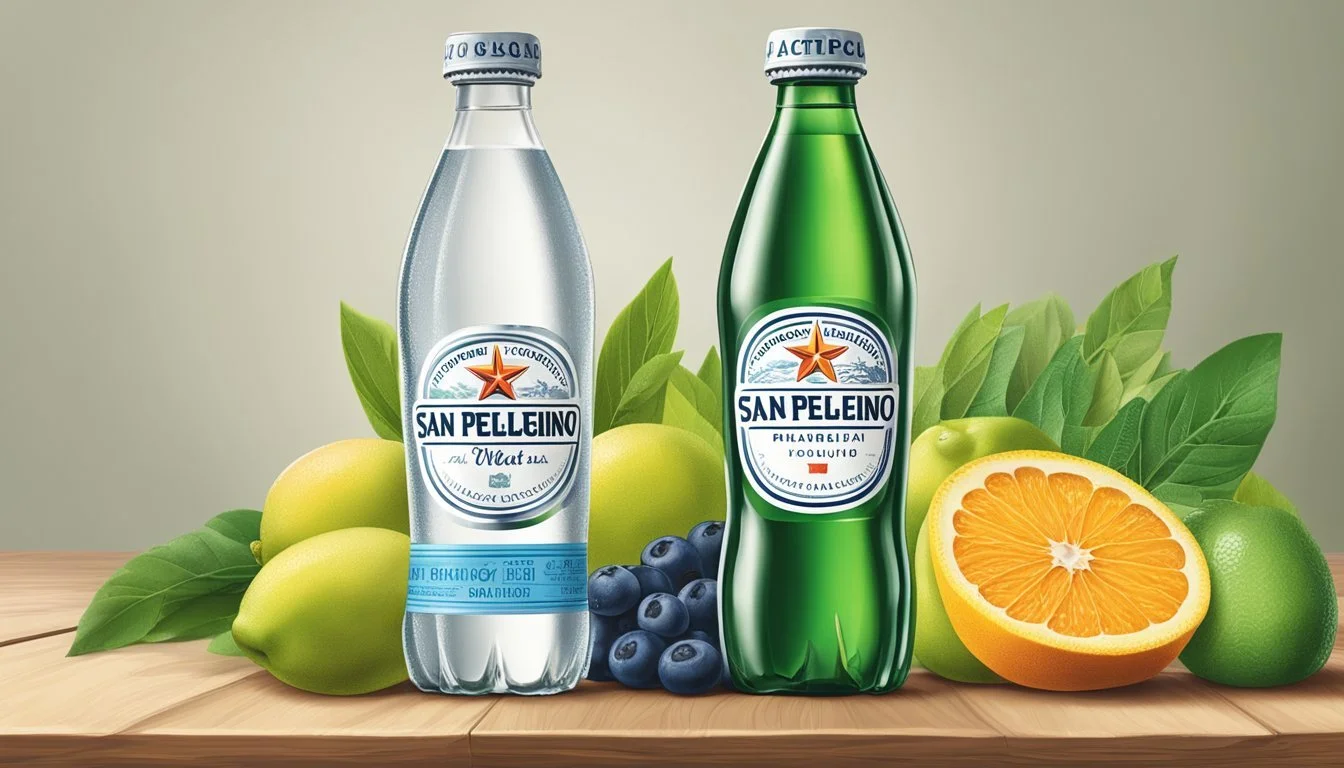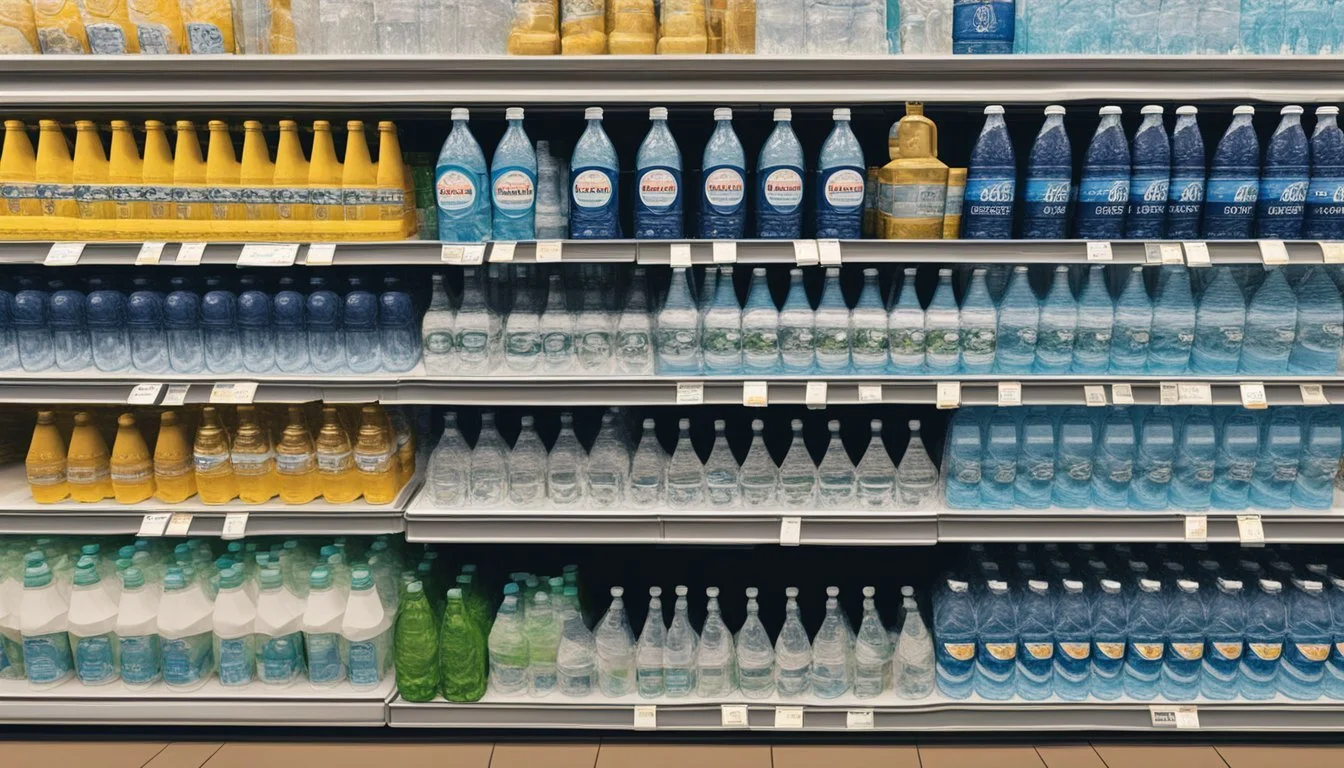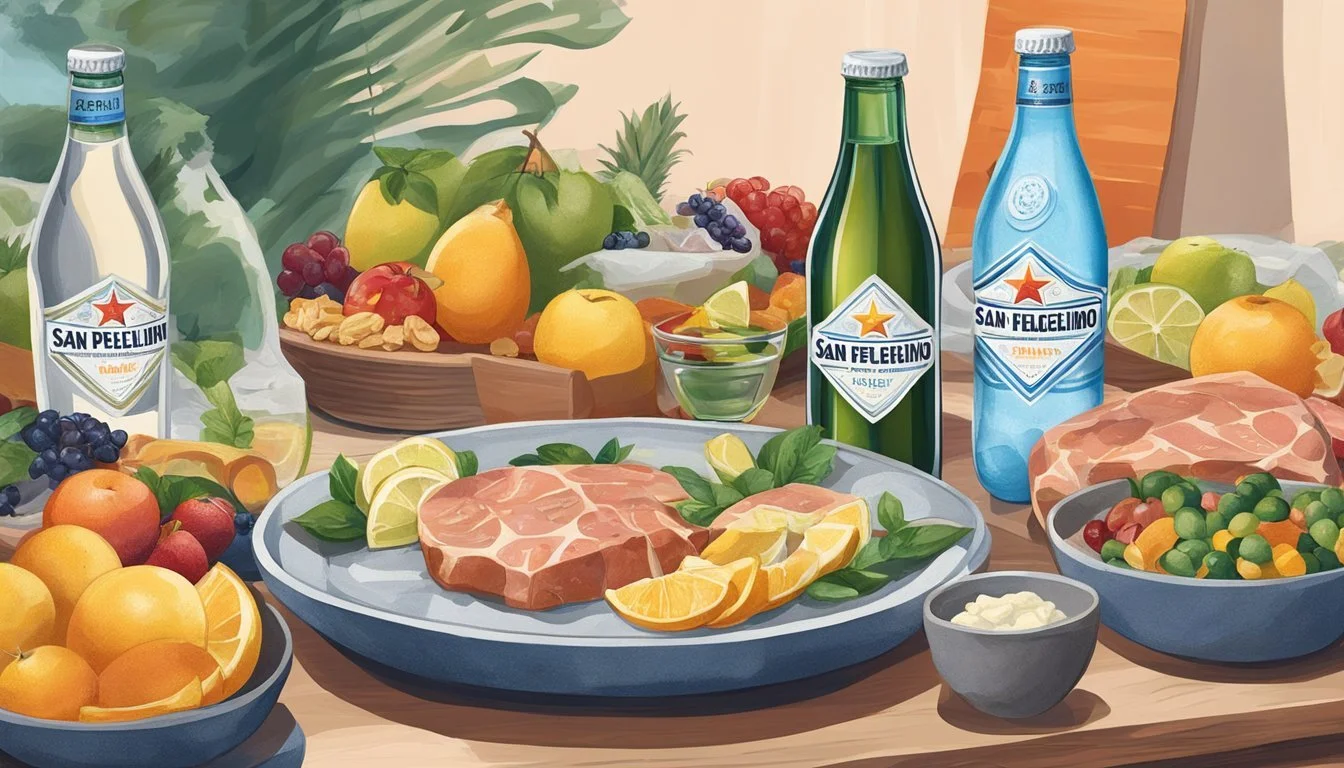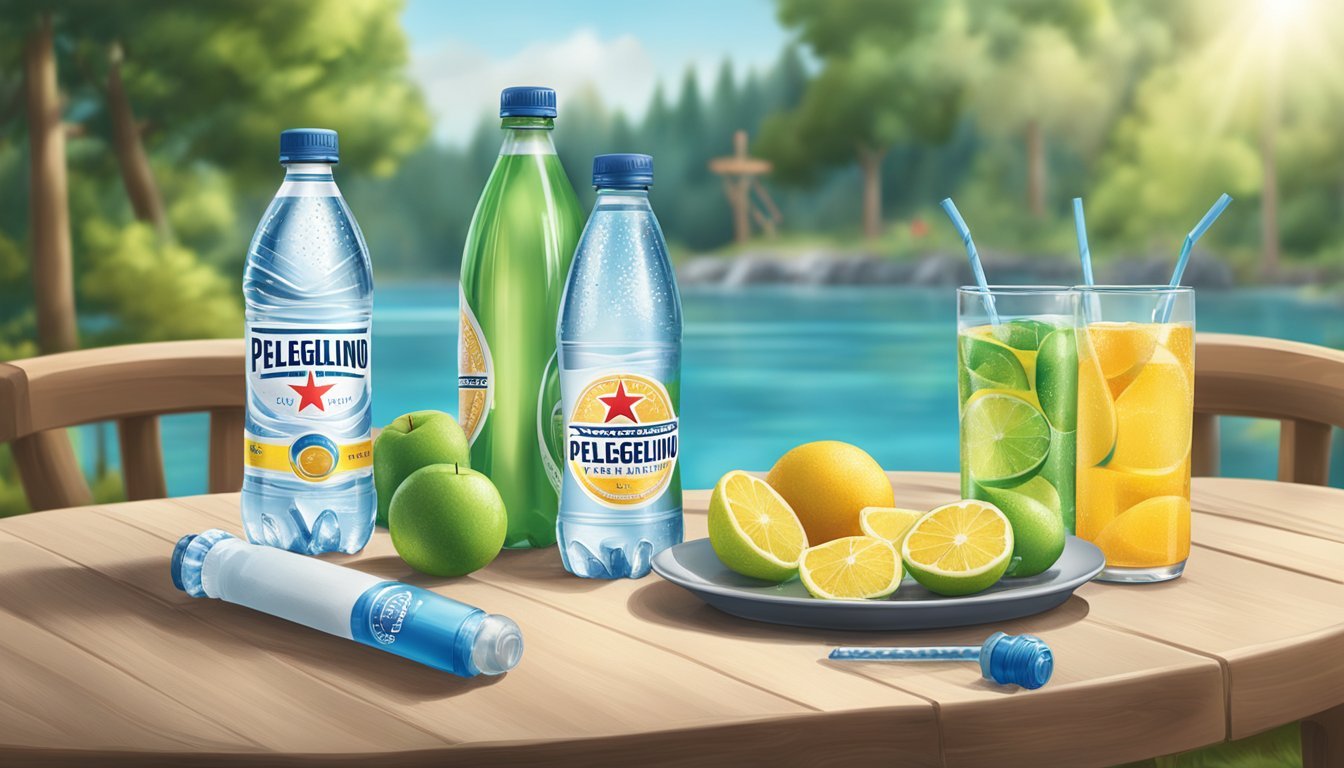San Pellegrino vs. Action
Which Bottled Water is Better for You
When it comes to bottled water, San Pellegrino and Acqua Panna often stand at the forefront of luxurious hydration. Both hailing from Italy, these brands offer distinct flavor profiles and unique mineral compositions that make them favorites among connoisseurs. San Pellegrino, with its effervescent bubbles and mineral-rich content sourced from the Italian Alps, provides a refreshing and slightly tangy taste.
On the other hand, Acqua Panna offers a smooth and velvety texture, derived from the artisanal springs of Tuscany, making it a popular choice for pairing with gourmet meals. Each brand brings a different experience to the table, catering to personal preferences. For those who prefer a sparkling, mineral-infused water, San Pellegrino stands out, while Acqua Panna appeals to those who enjoy a softer, still water.
Choosing between San Pellegrino and Acqua Panna ultimately depends on one's taste and the occasion. Both are unparalleled in quality and sophistication, earning their place on the tables of fine dining establishments worldwide.
History and Origin
San Pellegrino's rich history traces back to the Italian Alps, where the brand's journey began. Additionally, the evolution of the bottled water industry has significantly shaped the landscape of premium water brands.
San Pellegrino: From the Italian Alps
San Pellegrino originates from the town of San Pellegrino Terme in Lombardy, Italy. The region is known for its natural mineral springs, which have been renowned for their supposed health benefits since the 13th century. The water is naturally filtered through layers of dolomite and volcanic rocks, enriching it with mineral content.
The brand was officially established in 1899 and quickly gained popularity for its sparkling mineral water. By 1908, San Pellegrino was exporting to various European countries, solidifying its status as a premium bottled water brand. In 1997, Swiss company Nestlé acquired San Pellegrino, expanding its global reach even further.
Evolution of Bottled Water Industry
The bottled water industry has transformed dramatically over the past century. Initially, mineral water was consumed primarily for its perceived medicinal properties. As industrialization progressed, the focus shifted toward convenience and purity.
San Pellegrino has managed to maintain its premium status amidst increasing competition, including brands like Voss, Perrier, and Topo Chico. Its distinctive green bottle and branding contribute to its luxurious image. The demand for premium bottled water has surged, driven by a growing health consciousness and preference for high-quality products. This evolution underscores the brand's ability to adapt while retaining its historical essence.
Sourcing and Production
San Pellegrino is renowned for its distinct mineral content and effervescence, making its sourcing and production processes pivotal to its quality. Key areas include the natural springs in Italy and the meticulous extraction and bottling techniques that preserve the water's purity.
Natural Springs and Aquifers
San Pellegrino water originates from the San Pellegrino Terme, a town known for its natural springs. These springs are located in Italy, where the water undergoes a natural filtration process through the region's geological formations.
The water emerges rich in minerals such as calcium and magnesium, giving it a unique taste.
This journey can take up to 30 years as the water navigates through aquifers, picking up essential minerals which are crucial for its distinctive profile.
Extraction and Bottling Processes
The extraction process for San Pellegrino aims to preserve the water's natural composition. It is carefully collected from the aquifers in a controlled manner to maintain its mineral balance.
Once extracted, the water is transported to a nearby facility for bottling.
The bottling process includes rigorous quality checks to ensure that the water remains free from contaminants. Moreover, the sparkling nature of San Pellegrino is enhanced by adding natural carbon dioxide, mirroring its original effervescence.
The entire process is designed to retain the natural properties of the spring, ensuring each bottle reflects the purity and rich mineral characteristics synonymous with San Pellegrino.
Composition and Health Benefits
San Pellegrino and Acqua Panna offer distinct profiles that cater to various preferences and health needs. The following sections examine their mineral content, electrolytes, and pH levels.
Minerals and Electrolytes
San Pellegrino, known for its sparkling quality, has a rich mineral content. It contains 52 mg/L of magnesium, which supports muscle function and energy production. Sulfates present in San Pellegrino aid in digestion and detoxification.
Conversely, Acqua Panna is a still water with a more delicate mineral composition. It has balanced levels of calcium and magnesium, making it suitable for those seeking a milder taste. Both waters provide essential electrolytes that help maintain hydration and electrolyte balance.
Mineral San Pellegrino (mg/L) Acqua Panna (mg/L) Magnesium 52 Moderate Calcium Moderate Balanced Potassium Moderate Low Sodium Low Low
Understanding pH: Acidity vs. Alkalinity
San Pellegrino has an acidic pH level, typically around 4.5, due to its sparkling nature and mineral content. The acidity can help enhance flavors when paired with food.
Acqua Panna, on the other hand, has a neutral to slightly alkaline pH, generally around 8. This higher alkalinity can be beneficial for those looking to neutralize stomach acid or promote overall pH balance in the body.
Water pH Level San Pellegrino 4.5 (acidic) Acqua Panna 8 (alkaline)
Understanding these compositions helps consumers choose the right water for their health needs and taste preferences, reflecting the distinct benefits of both San Pellegrino and Acqua Panna.
Taste and Texture Profiles
Exploring the taste and texture profiles of bottled waters reveals key differences. San Pellegrino, known for its sparkling nature, offers a unique palate due to its mineral content and carbonation.
San Pellegrino's Unique Palate
San Pellegrino is celebrated for its distinct taste, characterized by a balanced minerality.
Natural minerals such as calcium, magnesium, and sodium contribute to its slightly bitter yet smooth profile. This minerality gives a refreshing experience, often paired with fine dining.
The taste can sometimes be perceived as slightly sweet or metallic, depending on one's palate and sensitivity to minerals. The water has a clean finish, enhancing its suitability for pairing with diverse cuisines.
The Role of Carbonation
San Pellegrino’s carbonation is a defining feature, creating a textured mouthfeel.
The bubbles are fine yet persistent, providing a delightful and invigorating sensation. This carbonation enhances the initial taste, making the water feel crisp and lively.
The level of bubbles also helps balance the minerality, ensuring that neither aspect overwhelms the other. The effervescence can complement or contrast with the flavors of accompanying foods or beverages, making it versatile in various dining scenarios.
Branding and Consumer Choice
Branding can significantly influence consumer choices, particularly in the bottled water market. This section explores the variety of brands available and the importance of brand identity in shaping consumer preferences.
Bottled Water Brands on the Market
The bottled water market is diverse, featuring brands like San Pellegrino, Acqua Panna, Evian, Fiji, and Voss Water. Each brand offers unique qualities, from the sparkling essence of San Pellegrino to the still, smoothness of Acqua Panna.
San Pellegrino is known for its mineral-rich sparkling water, often associated with fine dining. Its counterpart, Acqua Panna, provides a still option, sourced from Tuscany, known for its smooth taste.
Evian and Fiji emphasize their natural origins, with Evian sourcing from the French Alps and Fiji from artesian aquifers in the Fiji Islands.
Voss Water markets itself as premium water, enhanced by its sleek packaging and Norwegian origins.
The Importance of Brand Identity
Brand identity plays a crucial role in consumer choices. Names, logos, and packaging become symbols of quality and luxury. For instance, San Pellegrino’s signature green bottles and red star emblem convey a sense of heritage and fine dining. Consumers often associate it with high-end restaurants and special occasions.
Acqua Panna uses its Tuscan heritage to offer a sense of elegance and refinement. Fiji leverages its exotic source to create an image of purity and uniqueness, while Evian evokes the pristine nature of the French Alps.
Voss Water sets itself apart with minimalist design and premium marketing, attracting consumers looking for both style and substance. Branding thus differentiates products in a crowded market, shaping consumer perceptions and preferences.
Environmental and Sustainability Considerations
San Pellegrino and Action have notable differences in their approach to environmental impact and sustainability. Key aspects include the materials used for their containers and their respective sustainability initiatives.
The Impact of Plastic and Glass Containers
San Pellegrino uses both glass and plastic bottles for packaging. Glass bottles are generally favored for their recyclability and lower risk of leaching contaminants into the water.
Plastic bottles, although lighter and more convenient, present significant environmental concerns due to their potential to contribute to plastic pollution.
Action primarily uses plastic containers. This choice raises questions about long-term sustainability and the environmental footprint.
The production and disposal of plastic materials can lead to increased waste and pollution, affecting ecosystems and creating a heavier burden on recycling systems.
Water Brand's Sustainability Initiatives
San Pellegrino has made strides toward sustainability by introducing initiatives to reduce their environmental footprint. Their strategy includes efforts to enhance the recyclability of their plastic bottles and sourcing renewable energy for production.
Action has also been active in sustainability. It employs water-efficient production methods and invests in community projects focusing on cleaner water resources and sustainability.
The companies' initiatives reflect their commitment to reducing environmental impact and promoting a more sustainable future for bottled water.
Price and Accessibility
San Pellegrino and Action differ significantly in their pricing and accessibility, catering to different consumer preferences and markets. This section will explore how affordability and costs compare across different markets and between affordable and premium brands.
Affordability in Different Markets
San Pellegrino typically targets a niche market and is priced higher compared to Action. In the United States, San Pellegrino costs between $1.50 and $3.00 per liter. This higher price is reflective of its positioning as a premium brand, often found in upscale grocery stores and restaurants.
Action, on the other hand, is more budget-friendly. Priced at around $0.50 to $1.00 per liter, it appeals to a broader audience. Due to its lower cost, Action is readily available in supermarkets and convenience stores.
Comparing Costs: Affordable vs. Premium
Comparing costs between affordable and premium water brands highlights the stark differences in consumer choice. Brands like Action offer affordability with prices ranging from $0.50 to $1.00 per liter, making it accessible.
San Pellegrino, positioned as a premium option, costs significantly more. This price difference underscores the brand's association with quality and prestige. For consumers willing to pay extra for a perceived higher quality, San Pellegrino remains a favored choice.
Culinary Uses and Pairings
San Pellegrino and Action bottled waters offer unique ways to elevate culinary experiences. Both are favored by many for their ability to complement dishes and refresh palates.
Food and Wine Complementarity
San Pellegrino, known for its effervescence, pairs well with rich and spicy dishes. Its bold bubbles enhance flavors, making it a popular choice among sommeliers.
Action water, with its balanced minerality and smooth texture, is often favored with lighter dishes. This includes salads or delicate seafood.
Both waters shine when paired with wine. San Pellegrino's lively nature can stand up to robust red wines. Action's subtlety complements crisp white wines.
Water as a Palate Cleanser
Proper water selection can significantly impact dining. San Pellegrino, with its high carbonation, excels in refreshing the palate between bites.
Its intense bubbles clear residual flavors, making it ideal for courses with varying tastes.
Action water offers a gentler cleanse. Its still nature and balanced profile provide a mild reset for the palate. This makes it suitable for those who prefer subtler palate cleansers.
Both options, therefore, offer tailored experiences depending on the meal and individual preference.
Personal Preference and Lifestyle
Choosing between San Pellegrino and Action bottled water often comes down to individual taste and how the water fits into one's lifestyle. Important aspects to consider are the specific taste preferences and how each option supports a balanced diet and overall health.
The Role of Individual Taste
Personal preferences play a significant role in selecting bottled water. San Pellegrino is a sparkling water known for its effervescent quality and slightly salty flavor due to its mineral content. A person who enjoys the lively bubbles and the added taste from minerals is likely to prefer San Pellegrino.
On the other hand, Action is a still water, often preferred by those who seek a clean, pure taste without the carbonation. The choice hinges on whether someone favors sparkling over still water and their palate’s response to the mineral content in the water. For hydration and enjoyment, catering to individual preferences is essential.
Bottled Water in a Balanced Diet
Incorporating bottled water like San Pellegrino or Action into a balanced diet is a matter of matching health goals and lifestyle. San Pellegrino is rich in minerals, such as calcium and magnesium, which can contribute to daily nutrient intake. It can be a good choice for those looking to add a bit of mineral boost to their hydration routine.
Action, being a still water, may appeal to those who focus on maintaining high daily water consumption without additional minerals. It's particularly suitable for people following low-sodium diets or those who prefer their water plain and simple.
Both types can fit into a healthy lifestyle, but the choice depends on how these options meet one's dietary needs and personal health objectives.
More About San Pellegrino
Acqua Panna vs San Pellegrino: Which Bottled Water is Better?
Boxed Water vs San Pellegrino: Which Bottled Water is Better?
Core Hydration vs San Pellegrino: Which Bottled Water is Better?
Ice Mountain vs San Pellegrino: Which Bottled Water is Better?
Icelandic Glacial vs San Pellegrino: Which Bottled Water is Better?
Just Water vs San Pellegrino: Which Bottled Water is Better?
Mountain Valley Spring Water vs San Pellegrino: Which Bottled Water is Better?
Nestle Pure Life vs San Pellegrino: Which Bottled Water is Better?
Poland Spring vs San Pellegrino: Which Bottled Water is Better?
San Pellegrino vs Alkaline88: Which Bottled Water is Better?
San Pellegrino vs Aqua Carpatica: Which Bottled Water is Better?
San Pellegrino vs Cascade Mountain: Which Bottled Water is Better?
San Pellegrino vs Castle Rock: Which Bottled Water is Better?
San Pellegrino vs CBD Living: Which Bottled Water is Better?
San Pellegrino vs Crystal Geyser: Which Bottled Water is Better?
San Pellegrino vs Crystal Lake: Which Bottled Water is Better?
San Pellegrino vs Essence pH10: Which Bottled Water is Better?
San Pellegrino vs Hawaii Volcanic: Which Bottled Water is Better?
San Pellegrino vs Hawaiian Springs: Which Bottled Water is Better?
San Pellegrino vs Kirkland Signature: Which Bottled Water is Better?
San Pellegrino vs Liquid Death: Which Bottled Water is Better?
San Pellegrino vs Open Water: Which Bottled Water is Better?
San Pellegrino vs Proud Source: Which Bottled Water is Better?
San Pellegrino vs Purely Sedona: Which Bottled Water is Better?
San Pellegrino vs Richard's Rainwater: Which Bottled Water is Better?
San Pellegrino vs Simple Truth: Which Bottled Water is Better?
San Pellegrino vs Smartwater: Which Bottled Water is Better?
San Pellegrino vs Solan de Cabras: Which Bottled Water is Better?
San Pellegrino vs Talking Rain AQA: Which Bottled Water is Better?
San Pellegrino vs Topo Chico: Which Bottled Water is Better?
San Pellegrino vs Weird Water: Which Bottled Water is Better?
San Pellegrino vs Whole Foods 365: Which Bottled Water is Better?
San Pellegrino vs Whole Foods Italian Still Mineral water: Which Bottled Water is Better?
San Pellegrino vs Zephyrhills: Which Bottled Water is Better?


